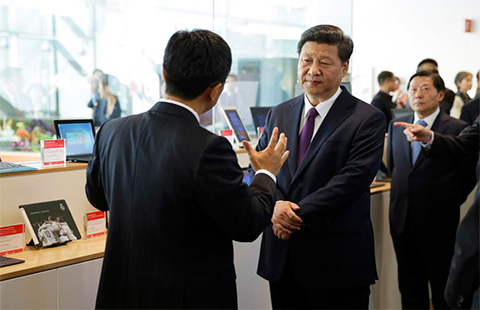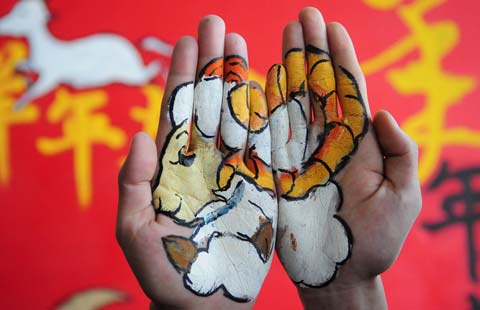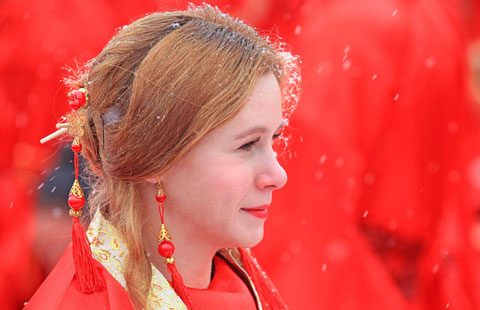Currently, Xinjiang has three projects on the UNESCO Intangible Cultural Heritage List and the List of Intangible Cultural Heritage in Need of Urgent Safeguarding - The Art of Xinjiang Uygur Muqam, the Epic of Manas, and the Meshrep, in addition to 127 items of intangible cultural heritage of state class and 293 items of the autonomous regional class, as well as 64 representative trustees of intangible cultural heritages at state level and 459 at autonomous regional level. In 2010, Regulations of Xinjiang Uygur Autonomous Region on the Preservation of the Art of Uygur Muqam was promulgated, which was China' s first separate regulations at provincial level designed to protect intangible cultural heritage. The autonomous region has collected more than 700 long folk poems of the Uygur, Kazak, Mongol, Kirgiz and other ethnic groups. Vigorous efforts have been made to preserve traditional ethnic cultural treasures, such as the Mongolian epic Janger, the Kazak' s ballad singing Aytes, the Hui folk song Hua' er, the Tajik' s Eagle Dance and the Xibe' s West Moving Festival.
Literature and arts are prospering. Since the founding of the autonomous region, Xinjiang' s folk and classical literature has been collected, collated, translated, published and studied. Writers, poets, translators, playwrights, performing artists, literary critics of all ethnic minority origins have rapidly matured, forming a multiethnic literary writing, performing and research contingent. Works of excellence have been staged, including Hello, Apandi (acrobatic show), Grand Bazaar (drama), Gherip-Senem (opera), Visitors on the Icy Mountain (musical), Love over the Tianshan Mountains (musical), and The Spring of Muqam (song and dance drama). A group of literary and art works have won the Best Works Award, the Lu Xun Literary Prize, the Gold Award of the National Ethnic Minority Theatrical Festival, Splendor Award and Lotus Award for Stage Arts of Excellence (the former for theatrical artworks and the latter for dance), the China Acrobatic Golden Chrysanthemum Award, the Steed Award (for ethnic minority writers), the Tianshan Literary Prize, and other national and autonomous regional prizes.
Press and publishing are making steady progress. In 2014, Xinjiang published 111 newspapers, including 51 in ethnic minority languages, and 199 periodicals, including 116 in ethnic minority languages and three in foreign languages. Xinjiang Daily, published in four languages - Uygur, Han Chinese, Kazak and Mongolian - is the official provincial-level newspaper published in the largest number of languages in China. Xinjiang Economic Daily has been published in Urumqi. Urumqi Evening News (Uygur edition) is China' s first evening post published in ethnic minority languages. Kizilsu News (Kirgiz edition) is China' s only newspaper published in the Kirgiz language. Qapqal News is the world' s only newspaper published in the Xibe language. Xinjiang now has 13 publishing houses publishing books, audio and video products, and e-publications in six languages - Uygur, Han Chinese, Kazak, Mongolian, Kirgiz and Xibe. Since 2010, the autonomous region has launched several major publishing projects, including Xinjiang' s Library, Xinjiang Ethnic Literary Creation and Chinese-Ethnic Minority Language Translation Project, and Encyclopedia Sinica (Uygur and Kazak editions). A group of excellent publications have won the Best Works Award, the China Government Award for Publishing, and other national awards.

 Here's what's on the menu for the state dinner
Here's what's on the menu for the state dinner
 President Xi visits Microsoft campus in Seattle
President Xi visits Microsoft campus in Seattle Xi revisits Lincoln High School after 1993 bond
Xi revisits Lincoln High School after 1993 bond
 Chinese, US business leaders gather at roundtable meeting
Chinese, US business leaders gather at roundtable meeting Xi visits assembly line of plane manufacturer Boeing in US
Xi visits assembly line of plane manufacturer Boeing in US First Lady tours Fred Hutchson Cancer Research Center
First Lady tours Fred Hutchson Cancer Research Center
 Boeing to sell 300 planes to China
Boeing to sell 300 planes to China Sino-US ties need more understanding: Xi
Sino-US ties need more understanding: Xi















